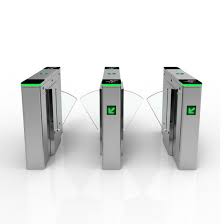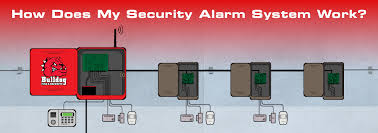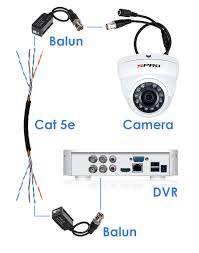Turnstile Gates: Enhancing Security and Efficiency
Turnstile gates have become an essential part of various industries, including transportation hubs, stadiums, office buildings, and other public spaces. These gates are designed to control the flow of people, ensuring authorized access while enhancing security measures. In this article, we will explore the benefits and functionalities of turnstile gates.
Enhanced Security:
One of the primary advantages of turnstile gates is their ability to enhance security. By allowing only one person to pass through at a time, these gates effectively prevent unauthorized entry and restrict the movement of individuals without proper credentials or tickets. This feature is particularly crucial in high-security areas where controlling access is paramount.
Efficient Crowd Management:
Turnstile gates are highly effective in managing large crowds efficiently. With their design that allows for one-way passage, they help regulate the flow of people in busy areas such as train stations or event venues. By maintaining organized queues and preventing overcrowding, turnstiles contribute to a smoother and more streamlined experience for both staff and visitors.
Access Control:
Turnstile gates can be integrated with various access control systems such as RFID cards, biometric scanners, or ticket readers. This integration ensures that only authorized personnel or ticket holders can gain entry into restricted areas. By providing a secure means of access control, turnstiles minimize the risk of unauthorized individuals entering sensitive premises.
Deterrence against Tailgating:
Tailgating refers to an unauthorized person following closely behind an authorized individual to gain entry without proper authentication. Turnstile gates are designed to prevent tailgating by allowing only one person at a time through their narrow passage. Some advanced turnstiles even employ sensors that detect tailgating attempts and trigger alarms or lock down until security personnel arrive.
Space Optimization:
Turnstile gates offer a space-saving solution compared to traditional swing doors or barriers. Their compact design allows for efficient utilization of space in crowded areas where every square meter counts. This advantage is particularly beneficial in places with high foot traffic, where maximizing space is crucial for smooth operations.
Customization and Integration:
Turnstile gates come in various designs and can be customized to fit specific requirements. They can be integrated with other security systems such as CCTV cameras, facial recognition technology, or alarms for enhanced surveillance and monitoring capabilities. This integration provides a comprehensive security solution tailored to the needs of each facility.
In conclusion, turnstile gates play a vital role in enhancing security, improving crowd management, and optimizing space utilization in various environments. Their ability to control access, deter tailgating attempts, and integrate with other security systems makes them an invaluable asset for organizations seeking efficient and reliable solutions. By implementing turnstile gates, businesses can ensure the safety of their premises while providing a seamless experience for authorized personnel and visitors alike.
7 Essential Tips for Turnstile Gate Maintenance and Security
- Regularly inspect all parts of the turnstile gate to ensure that they are in good working condition.
- Make sure the turnstile gate is properly installed and securely fixed to the ground.
- Ensure that the turnstile gate has a backup power supply for when there is an electrical outage.
- Test the functionality of the turnstile gate on a regular basis to ensure it is operating correctly and efficiently.
- Keep all access points locked at all times when not in use, and ensure that only authorized personnel have access to them when needed.
- Train staff on how to operate and maintain the turnstile gate safely and effectively, as well as how to respond in an emergency situation if necessary.
- Take extra precautions during peak times or events by adding additional security guards or other measures as needed for added safety and security measures
Regularly inspect all parts of the turnstile gate to ensure that they are in good working condition.
Regular Inspection: Ensuring Reliable Turnstile Gate Performance
To maintain the optimal functionality and security of a turnstile gate, it is crucial to regularly inspect all its parts. By conducting routine inspections, you can identify any potential issues or malfunctions early on and take appropriate measures to rectify them. Here are some key reasons why regular inspections are essential for keeping your turnstile gate in good working condition.
Identifying Wear and Tear:
Over time, the constant usage of a turnstile gate can lead to wear and tear on its components. Regular inspections allow you to closely examine each part, such as the barriers, sensors, control panels, and locking mechanisms. By identifying signs of deterioration or damage, you can promptly replace or repair the affected parts before they cause further complications.
Preventing Malfunctions:
A malfunctioning turnstile gate can disrupt smooth operations and compromise security measures. By inspecting the gate regularly, you can detect any potential issues that may lead to malfunctions. This includes checking for loose connections, misaligned barriers, faulty sensors, or any signs of electrical problems. Addressing these issues proactively will help prevent unexpected breakdowns and ensure uninterrupted functioning.
Ensuring Safety:
Safety is paramount when it comes to turnstile gates. Regular inspections help ensure that all safety features are in proper working order. This includes verifying the emergency stop button’s functionality, checking for any sharp edges or protruding parts that could cause injuries, and examining the gate’s overall structural integrity. By addressing safety concerns promptly, you create a secure environment for users.
Optimizing Performance:
A well-maintained turnstile gate performs optimally in terms of speed and accuracy. Regular inspections allow you to assess factors that may affect performance, such as friction in moving parts or calibration issues with sensors. By addressing these concerns through lubrication or recalibration when necessary, you can optimize the gate’s performance and provide a seamless experience for users.
Extending Lifespan:
A turnstile gate is a long-term investment, and regular inspections can help extend its lifespan. By identifying and resolving issues early on, you prevent minor problems from escalating into major ones that could require costly repairs or even replacement. Regular maintenance and inspections contribute to the gate’s longevity, ensuring a return on your investment for years to come.
In conclusion, regular inspections of all parts of a turnstile gate are essential for maintaining its functionality, security, and safety. By identifying wear and tear, preventing malfunctions, optimizing performance, and extending the gate’s lifespan through proactive maintenance, you can ensure that it operates smoothly and reliably. Make it a priority to conduct routine inspections to keep your turnstile gate in good working condition and provide a secure entry solution for your facility.
Make sure the turnstile gate is properly installed and securely fixed to the ground.
Ensuring Proper Installation and Secure Fixation of Turnstile Gates
When it comes to turnstile gates, proper installation and secure fixation are crucial factors that should not be overlooked. A well-installed gate not only guarantees smooth operation but also enhances the overall security and effectiveness of the system. In this article, we will emphasize the importance of ensuring the correct installation and secure fixation of turnstile gates.
First and foremost, proper installation is essential to ensure that the turnstile gate functions as intended. It is recommended to engage professional technicians or installers who are experienced in handling such systems. They possess the necessary expertise and knowledge to install the gate correctly, following manufacturer guidelines and industry standards.
During the installation process, attention should be given to factors such as alignment, levelness, and stability. The gate should be aligned properly so that it operates smoothly without any obstructions or jams. Levelness is crucial to maintain a balanced appearance and prevent any uneven pressure on the mechanism. Stability is paramount to ensure that the gate remains securely in place during operation.
Secure fixation of the turnstile gate to the ground is equally important. Depending on the type of gate and its intended use, various methods can be employed for secure fixation. This may include concrete footings, anchor bolts, or specialized mounting brackets designed for specific surfaces. By securely fixing the gate to the ground, it minimizes any risk of movement or tampering, ensuring its functionality and reliability.
Proper installation and secure fixation not only contribute to operational efficiency but also enhance security measures. A well-installed gate reduces the likelihood of malfunctions or breakdowns that could compromise access control systems. Additionally, a securely fixed gate prevents unauthorized individuals from attempting to dislodge or bypass it.
Regular maintenance checks should also be conducted after installation to ensure that all components remain in good working condition. This includes inspecting hinges, locks, sensors, and any electronic controls associated with the turnstile gate. Any signs of wear, damage, or malfunction should be addressed promptly to maintain optimal performance and security.
In conclusion, the proper installation and secure fixation of turnstile gates are essential for their functionality, reliability, and security. Engaging professional installers, paying attention to alignment and levelness, and using appropriate fixation methods are key steps in ensuring a well-operating gate. By prioritizing these aspects during installation and conducting regular maintenance checks, organizations can maximize the benefits of turnstile gates while providing a secure access control solution for their premises.
Ensure that the turnstile gate has a backup power supply for when there is an electrical outage.
Ensure Uninterrupted Access: The Importance of Backup Power Supply in Turnstile Gates
When it comes to turnstile gates, ensuring uninterrupted access is crucial, especially during unexpected situations such as electrical outages. To mitigate the impact of power failures, it is essential to have a backup power supply system in place. In this article, we will discuss the significance of having a backup power source for turnstile gates.
During electrical outages, buildings and facilities may experience a complete loss of power, leaving traditional access control systems and security measures temporarily disabled. However, with a turnstile gate equipped with a backup power supply, such as an uninterruptible power supply (UPS) or a battery backup system, access control can be maintained even when the main power source fails.
The primary advantage of having a backup power supply for turnstile gates is the continued operation during electrical outages. This ensures that authorized personnel can still gain entry or exit from secured areas without disruption. In high-security environments like airports or government buildings, where access control is critical at all times, having uninterrupted operation is paramount.
Moreover, during emergencies or evacuations when swift evacuation procedures are necessary, turnstile gates with backup power supplies allow for orderly and controlled exits. This feature enhances safety measures by preventing panic or congestion that could occur if access points were rendered inoperable due to power failures.
Another benefit of backup power supply systems for turnstile gates is their ability to maintain security protocols even in challenging circumstances. For example, if an electrical outage occurs during peak hours at a crowded venue or transportation hub, maintaining controlled entry and exit becomes even more critical. With a reliable backup power source in place, the turnstile gates can continue functioning seamlessly until normal power is restored.
It’s important to note that while choosing a backup power supply system for turnstile gates, factors such as capacity and duration should be considered. The system should be capable of providing sufficient power to operate the turnstiles for an extended period, ensuring continuous access control until the main power is restored.
In conclusion, having a backup power supply for turnstile gates is essential to ensure uninterrupted access and maintain security even during electrical outages. By investing in a reliable backup power system, organizations can safeguard their premises, prevent unauthorized access, and ensure smooth operations in any situation. Whether it’s during emergencies or routine power failures, the presence of a backup power supply ensures that turnstile gates continue to function as intended, providing seamless access control and peace of mind.
Test the functionality of the turnstile gate on a regular basis to ensure it is operating correctly and efficiently.
Testing the Functionality of Turnstile Gates: Ensuring Optimal Performance
When it comes to turnstile gates, regular testing is key to ensuring their correct and efficient operation. By conducting routine functionality tests, you can identify any potential issues or malfunctions before they become significant problems. In this article, we will explore the importance of testing and how it contributes to the overall performance of turnstile gates.
Why Test Turnstile Gates?
Testing the functionality of turnstile gates is crucial for several reasons. Firstly, it helps maintain a high level of security by ensuring that the gate is functioning as intended. By detecting any faults or vulnerabilities, you can address them promptly and prevent unauthorized access or breaches in your security system.
Secondly, regular testing allows you to assess the gate’s efficiency in managing crowd flow. Turnstile gates are designed to regulate the movement of people and prevent overcrowding. By testing their operation, you can ensure smooth passage and minimize congestion during peak hours or busy periods.
How to Test Turnstile Gates?
Testing turnstile gates involves a few simple steps:
- Check Physical Components: Start by inspecting the physical components of the gate, such as barriers, sensors, and control panels. Look for any signs of damage or wear that may affect their performance.
- Test Access Control Systems: If your turnstile gate is integrated with access control systems like RFID cards or biometric scanners, test their functionality by using authorized credentials. Ensure that the gate responds appropriately to valid access attempts and denies entry for invalid or unauthorized credentials.
- Evaluate Passage Speed: Measure the time it takes for individuals to pass through the gate. This will help determine if there are any delays or issues with its mechanism that may hinder efficient crowd management.
- Assess Alarm Systems: If your turnstile gate is equipped with alarm systems for detecting tailgating attempts or other security breaches, test these features to verify their reliability and responsiveness.
- Monitor Feedback and Reporting: Keep track of any error messages, system logs, or reports generated by the turnstile gate’s control system. This information can provide valuable insights into the gate’s performance and help identify any recurring issues that require attention.
By following these testing procedures regularly, you can ensure that your turnstile gate operates correctly, efficiently, and in accordance with your security requirements.
In conclusion, testing the functionality of turnstile gates is a vital maintenance practice that helps guarantee their optimal performance. By conducting routine tests, you can identify and address any potential issues promptly, ensuring the gate functions as intended. This not only enhances security but also contributes to efficient crowd management. So remember to make regular testing a part of your maintenance routine to keep your turnstile gate operating at its best.
Keep all access points locked at all times when not in use, and ensure that only authorized personnel have access to them when needed.
Securing Access Points: A Crucial Tip for Turnstile Gate Usage
When it comes to using turnstile gates effectively, one crucial tip stands out – keeping all access points locked at all times when not in use and ensuring that only authorized personnel have access to them when needed. This simple yet essential practice can significantly enhance security measures and prevent unauthorized entry.
By keeping access points locked when not in use, organizations can create an additional layer of protection for their premises. This includes entrances, exits, and any other access points controlled by turnstile gates. Locking these points adds an extra barrier against unauthorized individuals attempting to gain entry.
Moreover, restricting access to authorized personnel only further strengthens security. By implementing strict protocols and providing unique credentials or access cards, organizations can ensure that only those with proper authorization can pass through the turnstile gates. This measure minimizes the risk of unauthorized individuals entering restricted areas or compromising sensitive information.
Maintaining locked access points and controlling authorized personnel’s access also helps organizations monitor and track movement within their premises. By having a clear record of who accessed specific areas at specific times, any security breaches or suspicious activities can be easily identified and investigated.
Additionally, this practice promotes accountability among employees or visitors who are granted access. Knowing that their movements are being monitored encourages responsible behavior and discourages any attempts to bypass security measures.
To implement this tip effectively, organizations should establish clear policies regarding the locking of access points when not in use. Regular audits should be conducted to ensure compliance with these policies and identify any potential vulnerabilities.
In conclusion, keeping all access points locked at all times when not in use and allowing only authorized personnel to use them is a crucial tip for maximizing the effectiveness of turnstile gates. By following this practice diligently, organizations can significantly enhance their security measures, deter unauthorized entry attempts, and maintain better control over who accesses their premises.
Train staff on how to operate and maintain the turnstile gate safely and effectively, as well as how to respond in an emergency situation if necessary.
Ensuring Safety and Efficiency: Training Staff on Turnstile Gate Operations
When it comes to operating and maintaining turnstile gates, proper training for staff members is crucial. Not only does it promote safe usage of the gates, but it also enhances their effectiveness in managing access control. Additionally, training staff on emergency response procedures equips them with the necessary skills to handle unexpected situations. In this article, we will highlight the importance of training staff on turnstile gate operations and emergency protocols.
Safe and Effective Operation:
Staff members should be trained on how to operate turnstile gates safely and efficiently. This includes understanding the different modes of operation, such as normal passage mode or restricted access mode. They should also learn how to troubleshoot common issues that may arise during operation, such as jammed cards or mechanical malfunctions. By providing comprehensive training on gate operations, organizations can minimize the risk of accidents and ensure a smooth flow of people through the gates.
Proper Maintenance:
Maintenance plays a vital role in keeping turnstile gates in optimal condition. Staff members should be trained on regular maintenance tasks such as cleaning, lubrication, and inspection of gate components. They should also be familiarized with any specific maintenance requirements provided by the manufacturer. Regular maintenance not only prolongs the lifespan of the gates but also ensures their reliable performance over time.
Emergency Response:
In emergency situations, staff members need to know how to respond swiftly and effectively while prioritizing safety. Training should cover protocols for incidents like power failures, medical emergencies, or security threats. Staff members should learn how to override the gate system if necessary, allowing for quick evacuation or access for emergency personnel. By equipping staff with proper emergency response training, organizations can minimize potential risks and ensure a coordinated response when needed.
Regular Refresher Courses:
To maintain proficiency in operating turnstile gates and responding in emergencies, regular refresher courses are essential. Technology advancements or changes in gate systems may occur over time, and staff members should stay updated on the latest practices and procedures. Refresher courses also serve as a reminder of safety protocols, ensuring that staff members are prepared to handle any situation that may arise.
In conclusion, training staff on turnstile gate operations and emergency response is vital for maintaining safety and efficiency. By providing comprehensive training, organizations can ensure that their staff members are well-equipped to operate and maintain turnstile gates effectively. This not only enhances the overall security of the premises but also contributes to a smooth flow of people through the gates. Regular refresher courses further reinforce knowledge and skills, ensuring that staff members remain prepared for any situation that may occur.
Take extra precautions during peak times or events by adding additional security guards or other measures as needed for added safety and security measures
During peak times or events, it is crucial to prioritize safety and security when utilizing turnstile gates. While these gates already offer a level of control and access management, taking extra precautions can further enhance the overall safety of the premises. One effective measure is to add additional security guards or personnel during these busy periods.
By increasing the number of security guards, you not only have more eyes on the crowd but also create a visible deterrent for potential troublemakers or unauthorized individuals. These extra personnel can assist in managing queues, ensuring that everyone follows the proper procedures and maintains order while entering or exiting through the turnstile gates.
Moreover, additional security measures can be implemented alongside turnstile gates to strengthen overall security. This may include deploying surveillance cameras strategically to monitor key areas, installing metal detectors or X-ray scanners for bag checks, or utilizing handheld devices for random security checks.
By combining turnstile gates with supplementary security measures and personnel during peak times or events, you create a comprehensive approach to safety and security. This proactive approach helps in preventing incidents, deterring potential threats, and ensuring a smooth flow of people throughout the premises.
Remember that each event or peak period may have its unique requirements. Therefore, it is essential to assess the specific needs of your facility and consult with security experts to determine the best course of action. By being prepared and taking these extra precautions when necessary, you can provide an environment that prioritizes safety and offers peace of mind for everyone involved.




